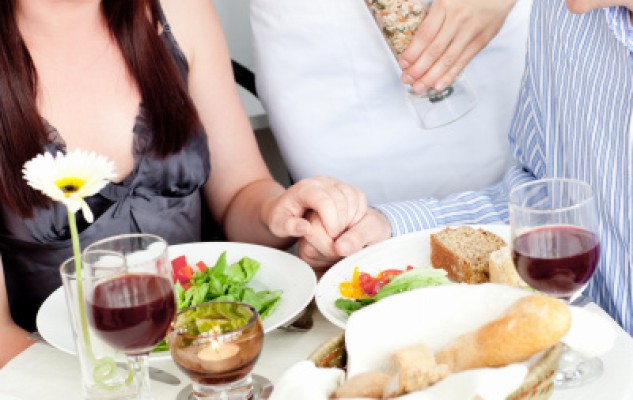
On a recent trip “down under” to visit my husband’s family, we experienced the powerful connection between wine tasting and mindful eating.
New Zealand and Australia are known for their outstanding “new world” wines. Although we weren’t in the heart of wine region in either country, we managed to find some interesting tasting rooms. One was housed in an old mortuary. I know. That should have been our first clue. They served old (and I don’t mean aged) wine in little plastic communion-style cups. The wines had creepy names that bore no relation to the grapes that gave their life for us.
The wine maker, a retired chemist, bragged, “Making wine is easy.” I whispered in my husband’s ear, “Making good wine – now that’s the hard part!”
It dawned on me that sometime during the 15 years since I quit drinking white zinfandel from a box (not that there’s anything wrong with that), I had actually learned to appreciate decent wine. I’m no expert but I know what I like (and it isn’t usually served in plastic). I had to ask myself, how did I become a bit of a wine snob?
The same way I became a foodie: one taste at a time.
By simply deciding to be attentive to what I eat (and drink), I’ve become much more aware of the aromas, flavors, and textures of food. More importantly, I’ve become much more connected to the experience and its effect on my body.
Just as I know that there’s an invisible but very real line between enjoyment and abuse of wine, there’s a similar line that many people cross with food. The more mindful you are, the less likely you are to cross that line.
This simple but profound lesson has allowed me to enjoy food more while eating less. I’m no longer dazzled by large portion sizes or distracted by packaging, health claims, or other attempts to lure me into eating marginal food (any more than the wine cellar viewed through the hole in the floor where they used to raise the casket could distract me into believing that wine was worth drinking!).
I’m certainly no sommelier, but I am grateful to have discovered the similarities between the enjoyment of both wine and food in moderation. So here’s my take on…
The basics of wine tasting and the mindful eating corollaries
Serve
Wine Tasting: Pour your wine in a clear, stemmed glass, filling it only halfway or less so there’s room to swirl.
Mindful Eating: Serve your food on a plate rather than eating it out of cartons, bags, or other containers that are destined for the dump or that prevent you from fully seeing what you’re putting in your mouth. And if you’ve got so much food that you can’t even see the plate, you’ve probably got more than you actually need.
See and sniff
Wine Tasting: Notice the color and viscosity of the wine. Swirl it gently in the glass. Put your nose in and sniff deeply to appreciate the aromas that hint about the terroir (the climate, soil type, drainage, wind direction, humidity and other factors in a particular vineyard) and the winemaking process used.
Mindful Eating: Notice the colors, textures, and aromas of your food. Take a moment to consider and express gratitude for the food on your plate and everything and everyone that contributed to getting it there to nourish you – from the sun, soil, water, farmer or rancher, truck driver, clerk, chef…
Sense
Wine Tasting: Sip a small mouthful of wine. Swish the wine over your tongue and open your mouth slightly as you inhale, bringing the aromas into the back of your nose.
Mindful Eating: Put a small amount of food in your mouth and set your fork down so you can focus on the bite that is in your mouth rather than the next one. Chew your food thoroughly as you breathe to bring the flavors up to the back of your nose where much of the “taste” of food actually comes from.
Savor
Wine Tasting: Mentally describe the flavors, identifying subtleties, similarities to other familiar flavors, and noting how the wine complements or detracts from any food you’re eating.
Mindful Eating: Be aware of the flavors, textures, and temperatures of your food. See if you can identify the ingredients and notice how they layer to create new flavors.
Spit (or small bites)
Wine Tasting: Spit out the wine if you’ll be tasting several wines in a row so you don’t dull your senses or cross that invisible line between enjoyment and intoxication.
Mindful Eating: Don’t spit out the food! Instead, take small servings and small bites so you can pace yourself. This will help you keep from crossing that invisible live between enjoyment and misery.
Like tasting wine, the basic tenets of mindful eating are to eat with attention and intention – attention to the experience and the intention of enjoyment without having to pay the price of excess.
That is what it means to eat what you love, and love what you eat. Now, that is something to toast!





